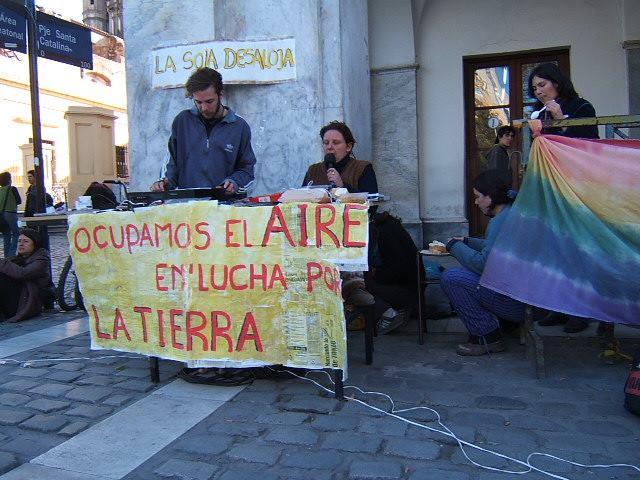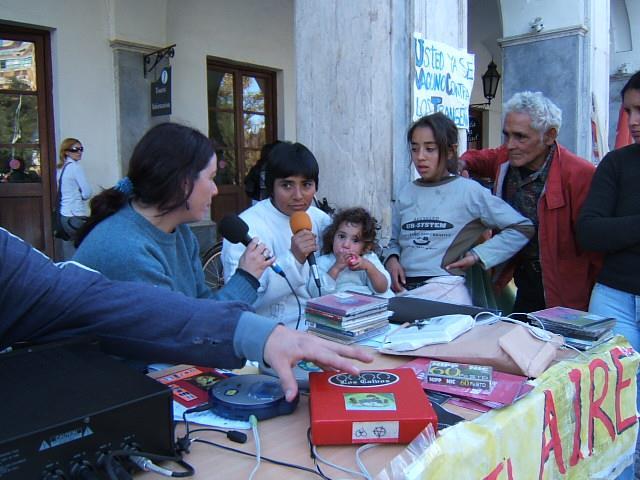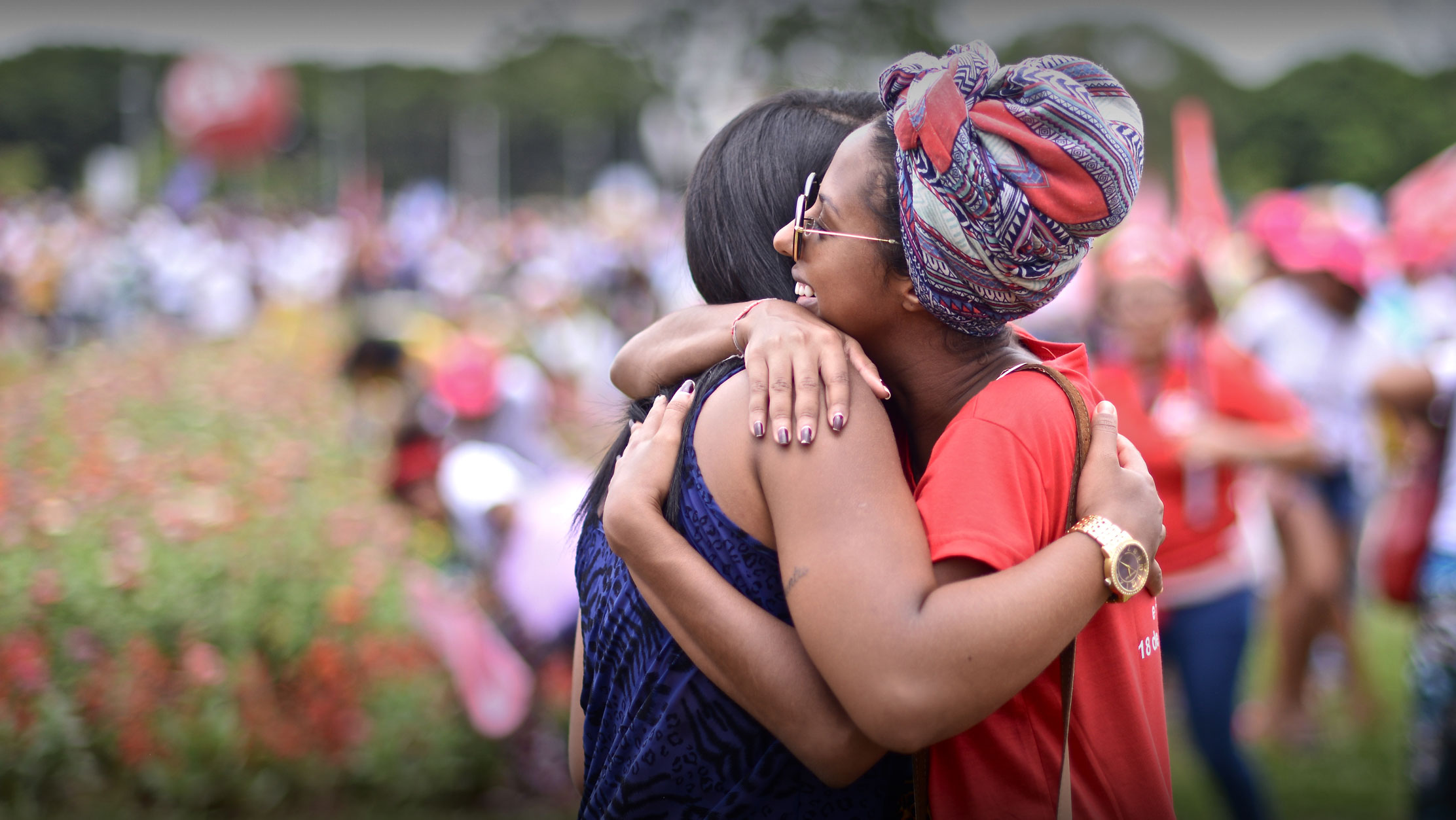FRIDAY FILE – February 13 is World Radio Day[1], and this year UNESCO recommended undertaking actions to promote gender equality. AWID spoke to feminist activists and communicators from Costa Rica and Argentina about how women and other social movements are taking ownership of the radio to ensure it reflects their issues and agendas.
By Gabriela De Cicco
Since radio broadcasting became more regular in 1920 women's voices have played a secondary role – most often as the nicely modulated ones of commercial announcers. But more recently women have begun to make a place for themselves in radio stations, as leading hosts and producers, although their numbers are still insufficient, and a greater diversity of voices are needed to analyze and question reality with a gender perspective.
As part of this year's World Radio Day celebrations, UNESCO sought to promote gender equality by raising awareness among radio station owners and executives, journalists and governments, on developing radio-focused gender policies and strategies; eradicating stereotypes; building radio production skills among the youth, paying particular attention to young women as producers, hosts and reporters; and also promoting safety for women radio journalists.[2]
Women's voices on the radio
As radio stations have become commercial enterprises, economic or political interests have affected their content. Voices of resistance have found no space or were relegated to the margins. In 1983, broadcasters of cultural and popular radio met in Montreal, Canada, and came up with the idea of creating a new type of radio - community radio. This not-for-profit radio would give space to the voices of those not able to access mainstream radio, allowing local people to become actively engaged. In 1986 that spontaneous movement of radio broadcasters began to call itself World Association of Community Radio Broadcasters (AMARC, for its original French acronym). In 1992 AMARC created Women's International Network (WIN) "whose main goal was not only to guarantee the presence of women in community radio but also to develop a gender programming strategy for this kind of radio that will contribute to eradicate stereotypes".[3]
Following the World Conference on Human Rights (Vienna, 1993), AMARC, UNIFEM and Red ADA (Bolivia) produced a series of radio spots titles "Without Women's Rights, there are no Human Rights" in several languages including Indigenous ones like aymara and quechua[4].
Those years of vibrant feminist mobilization saw the birth of the Feminist International Radio Endeavour (FIRE), created in 1991 in Costa Rica because of the dearth of women's voices in the media. Katerina Anfossi, FIRE's Coordinator, thinks that, "FIRE has inspired a certain way of communicating, not only by women but also by other social movements, and in many ways also in mass media, that have been nurtured by the information generated by our feminist perspective and methodology". She adds, "The presence of women in, for instance, community radios has allowed for mainstreaming a gender perspective in productions", but she adds the criticism that, "Sometimes this is relative and only happens under radical circumstances, like feminicides or special dates on the feminist calendar. It is then that we see our agenda widely covered in the media, only to then become invisible again".
Argentinian feminist communicator Liliana Daunes says, "When radio content is informed by news and reflections of people's struggles, making visible their complaints and demands, giving the floor to different sectors, multiplying their voices. When women are included, there are attempts to break the binary and contradictions that are assumed". Daunes explains that it is from the perspective of "Always seeking freedom, with those feminist ethics and a corresponding aesthetics, that I join and am part of the struggles for women's rights, and that of lesbians, gays, bisexual, intersex, travesti, transsexual (LGBTI) persons. Through radio programmes, I help to amplify the voices of First Nations and peasant communities in the struggle. Or the resistance and dreams of different people's collectives, like young people, that are often invisibilized by hegemonic communication."
From street radio to the studios

“Open radios” are a widespread practice in Latin America. They are set up during demonstrations to read out slogans or statements, and in their early days they were similar to community radios but broadcast from the street or a park. For members of the anti-capitalist feminist collective “Las Histéricas, las Mufas y las otras” (Cordoba, Argentina - Hysterics, Jinxes and Others), open radios were an important communication tool to deploy in their street actions on gender-based violence, abortion and other issues. Fabi Tron, an Argentinean lesbian activist who was part of this collective, remembers that in 2006/7 the group decided to record a few spots for those open radios. "It was a way to convey our message without it being mediated by the perspectives of the journalist who happened to interview us on mainstream radio".
In those days, Movimiento de Mujeres de Córdoba (Cordoba Women's Movement, Argentina) created its first radio program called "No rib at all" on radio Revés, a radio station belonging to the Cordoba National University. Tron recalls, "It was a very interesting process because the radio did not charge us for the space, but required that we facilitated gender training workshops instead. The exchange was very interesting because we learned how to do radio, and they got an introduction to a subject that, until then, was unfamiliar to them. I think we were able to influence them a lot, emphasizing non-sexist language, and once a week we had a space to publicize the activities and reflections of the Women's Movement. It was the program we wanted, that we had designed and we gave space to many women's voices".
At the same time in Cordoba, Tron was also involved in another project that began to take shape: “Red Nosotras en el Mundo” (We in the World Network). Red Nosotras weaves Latin America and Europe together through a 24-hour Internet radio, with more than 40 programs made by women and LGBTI persons from Latin America, Spain and other European countries.

Red Nosotras also provides training on gender and new technologies specifically for the women's movement, and for women communicators or activists. Tron considers these trainings helped "Many to own not just their voices before a microphone - something that can be really hard for many women, gays or lesbians - but also own the new technologies and empower themselves to use them'. Now with a computer and a couple of programs it's relatively easy for you to make a radio show and broadcast it live". This practice has allowed the Network to broadcast the Encuentros Nacionales de Mujeres (National Women's Gathering) in Argentina and FIRE, for example, has broadcast from special UN sessions, the AWID Forum and other events in different countries, this "enables dialogue and inclusion rather than compartmentalization", says Tron.
Communication from a gender perspective
Trans activist and teacher Vida Morant is highly critical, not only of radio but of mass media in general, saying "Many times they become the gate-keepers who make sure our issues are erased. But it's even worse when they do approach our issues, most times in an inappropriate, demeaning way with very little knowledge of the causes and the history that built these struggles. This is as much of a concern as rendering them invisible is. If a feminist, queer, LGTBI communication exists, it is because we activists have found and conquered those spaces, not because the media opened them up".
A key element for Tron is communication from a gender perspective, beyond specific radios programs that are feminist or reflect the agenda of the women's movement. She points out that "It has to do with speaking of any social issue, any kind of reality, or different oppressions, from a gender perspective. This means not only using non-sexist language but also the perspective of women in specific circumstances. For instance, there is a tunnel collapse in a mine and everybody speaks of the miners down there. Who speaks about the miners' wives who are dealing with the situation from the outside, sustaining their children? You can focus on them, and then you will be integrating a gender perspective in communication. I think it's important to be clear about this".
Tron adds that for her, "There is a hard to crack core in communication and, that is the persistence of sexist language usage. For many journalists, both women and men, it is just inclusive language - incorporating male and female grammatical forms. That's fine, but it does not stop there. You might have been talking to journalists - women and men - for several years and they would still say 'No, I don't think it's important to change the language'. I think if we are not clear about the fact that if we don't change the language we can't change the world either."
[1] UNESCO’s Executive Board recommended to the General Conference the proclamation of World Radio Day, on the basis of a feasibility study undertaken by UNESCO, further to a proposal from Spain. The objectives of the day are: to raise greater awareness among the public and the media of the importance of radio; to encourage decision makers to establish and provide access to information through radio; as well as to enhance networking and international cooperation among broadcasters
[2] http://www.unesco.org/new/en/world-radio-day
[3] http://periodismohumano.com/sociedad/comunicacion/la-radios-comunitarias-siguen-llegando-donde-no-llegan-otros-medios.html
[4] The spots were produced in 1998. Some of them can be found at http://radioteca.net/audioseries/sin-los-derechos-de-las-mujeres-no-hay-derechos-2/
